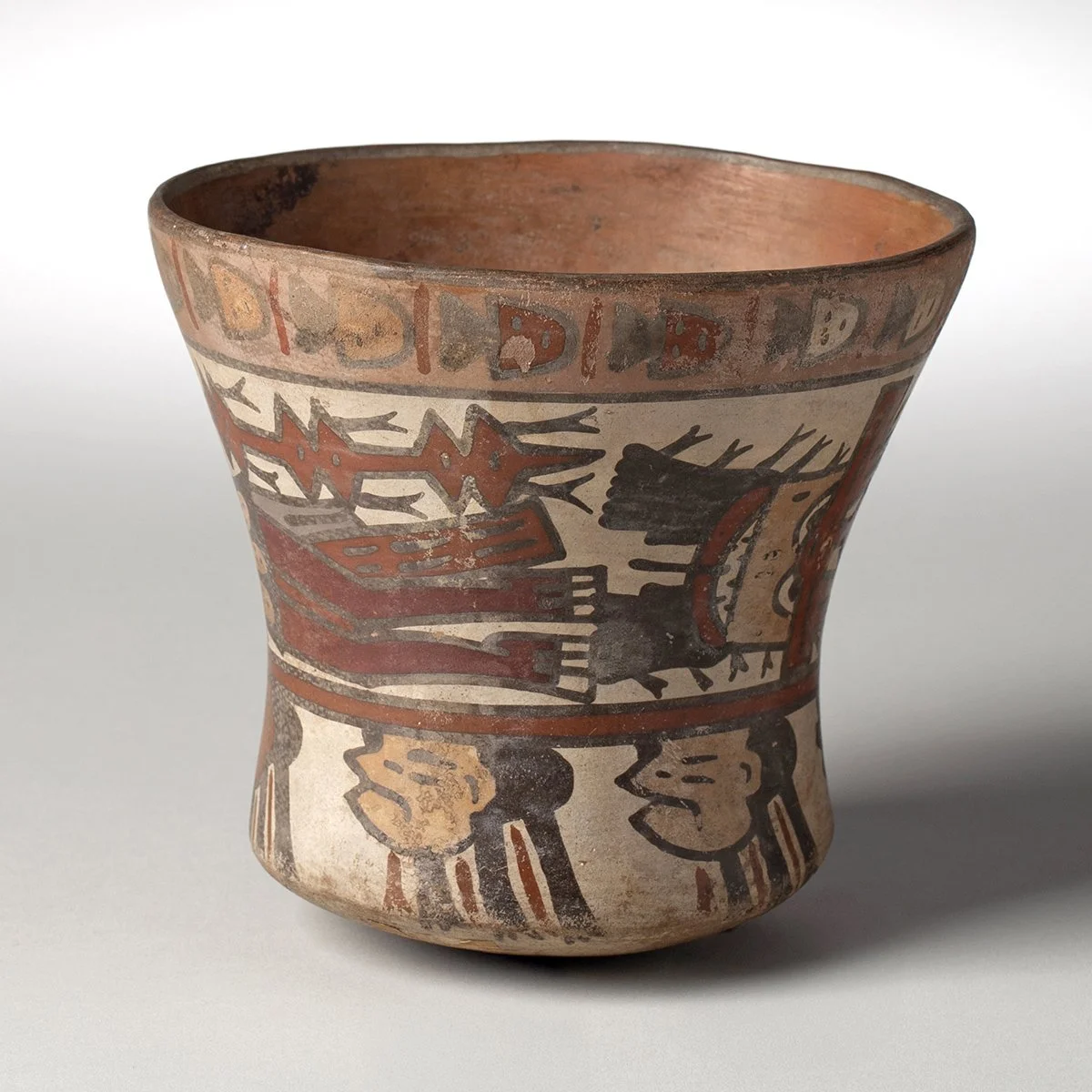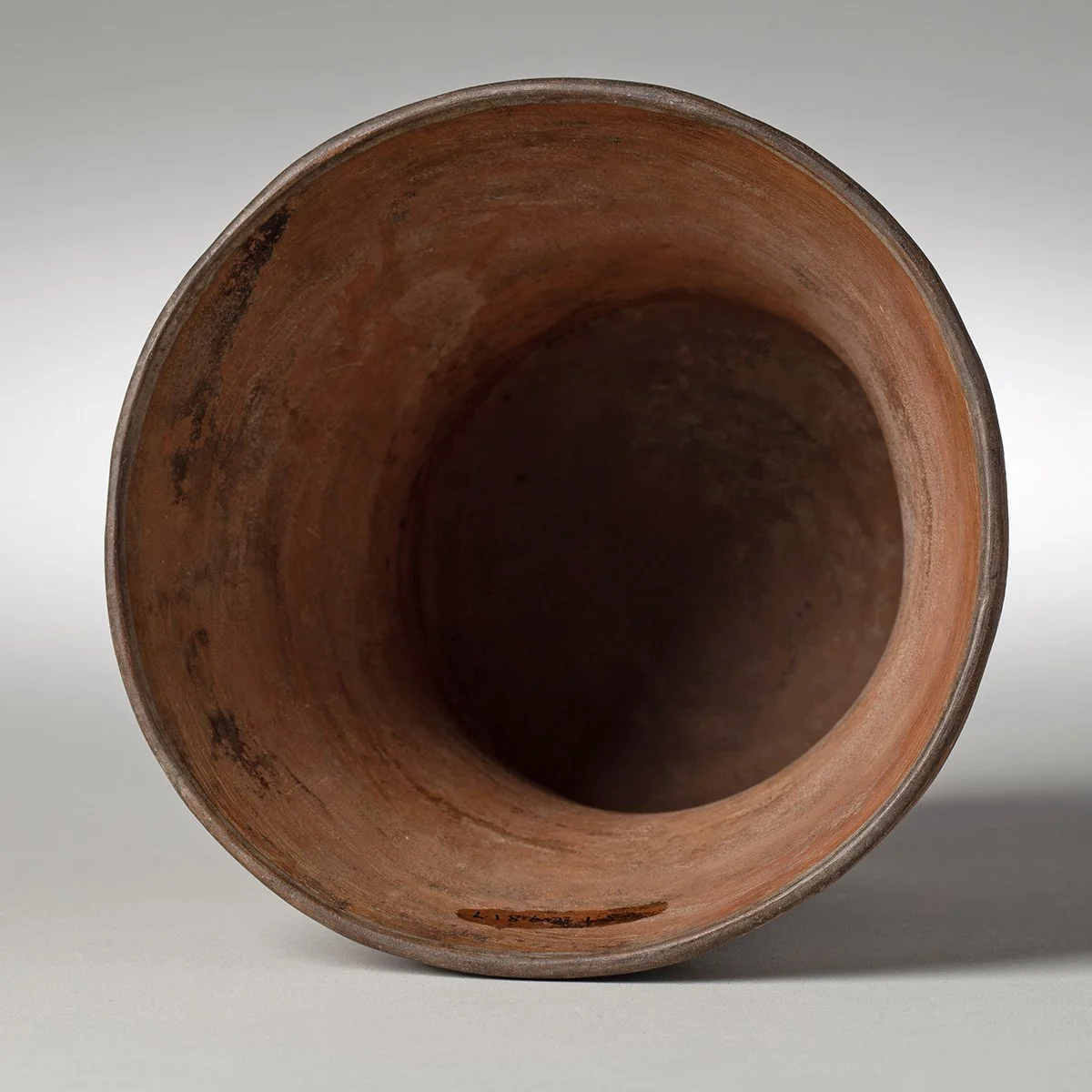 Image 1 of 7
Image 1 of 7

 Image 2 of 7
Image 2 of 7

 Image 3 of 7
Image 3 of 7

 Image 4 of 7
Image 4 of 7

 Image 5 of 7
Image 5 of 7

 Image 6 of 7
Image 6 of 7

 Image 7 of 7
Image 7 of 7








Nazca Vessel - SOLD
700 - 900 AD
Height 4 3/4" Diameter 5 3/4"
Provenance: Private collection, New York, prior to 1965
Museum numbers 25-109.817 and traces of old label on underside
Although finely decorated Nazca vessels were made in specialized workshops, recent discoveries in small habitation sites show that the use of painted plates and open bowls was not limited to people living in monumental sites. These vessels were widely distributed among the population and used in households of any socioeconomic status. Plates and bowls were probably obtained during feasts, which gave opportunities to elites to enhance their own status by displaying and distributing prestigious crafts among the population. This bowl shows flying figures with human trophy heads. The Nazca had a headhunting cult; caches of several trophy heads with carrying ropes have been discovered occasionally by archaeologists. The frequent depiction of severed heads is one of the most distinctive features of Nazca ceramic art. According to specialists of Nazca archaeology, heads were trophies of warfare that were obtained during territorial conflicts, and then used for ritual purposes. They were probably seen as sacred means for the control of water and agricultural fertility.
700 - 900 AD
Height 4 3/4" Diameter 5 3/4"
Provenance: Private collection, New York, prior to 1965
Museum numbers 25-109.817 and traces of old label on underside
Although finely decorated Nazca vessels were made in specialized workshops, recent discoveries in small habitation sites show that the use of painted plates and open bowls was not limited to people living in monumental sites. These vessels were widely distributed among the population and used in households of any socioeconomic status. Plates and bowls were probably obtained during feasts, which gave opportunities to elites to enhance their own status by displaying and distributing prestigious crafts among the population. This bowl shows flying figures with human trophy heads. The Nazca had a headhunting cult; caches of several trophy heads with carrying ropes have been discovered occasionally by archaeologists. The frequent depiction of severed heads is one of the most distinctive features of Nazca ceramic art. According to specialists of Nazca archaeology, heads were trophies of warfare that were obtained during territorial conflicts, and then used for ritual purposes. They were probably seen as sacred means for the control of water and agricultural fertility.
700 - 900 AD
Height 4 3/4" Diameter 5 3/4"
Provenance: Private collection, New York, prior to 1965
Museum numbers 25-109.817 and traces of old label on underside
Although finely decorated Nazca vessels were made in specialized workshops, recent discoveries in small habitation sites show that the use of painted plates and open bowls was not limited to people living in monumental sites. These vessels were widely distributed among the population and used in households of any socioeconomic status. Plates and bowls were probably obtained during feasts, which gave opportunities to elites to enhance their own status by displaying and distributing prestigious crafts among the population. This bowl shows flying figures with human trophy heads. The Nazca had a headhunting cult; caches of several trophy heads with carrying ropes have been discovered occasionally by archaeologists. The frequent depiction of severed heads is one of the most distinctive features of Nazca ceramic art. According to specialists of Nazca archaeology, heads were trophies of warfare that were obtained during territorial conflicts, and then used for ritual purposes. They were probably seen as sacred means for the control of water and agricultural fertility.

